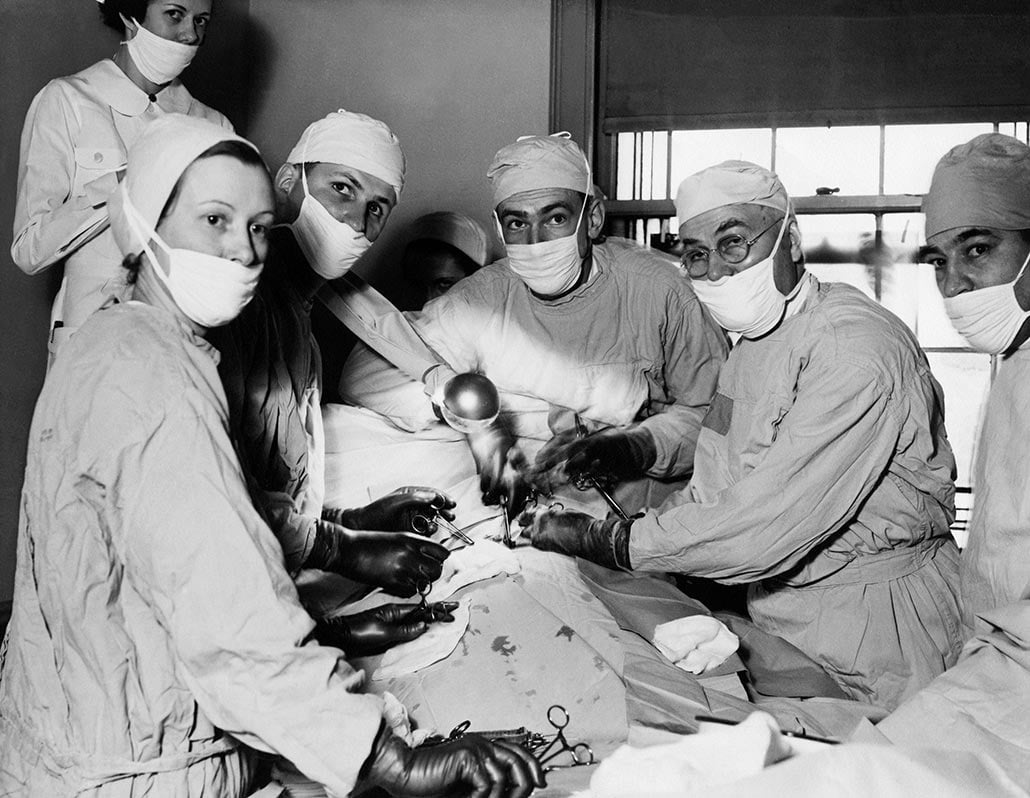THE 1930s
Gland Theft Thyroid

In 1936, Dr. George Crile Sr. (second from right) performs his 25,000th thyroid operation, assisted by his son, Dr. George “Barney” Crile Jr. (third from left). | Photo: Cleveland Clinic Archives
George Crile Sr., MD, called it “stealing the thyroid.” The Cleveland Clinic co-founder believed that fear could lead to serious complications for thyroidectomy patients, so they weren’t told in advance when their thyroids would be removed. Instead, they grew accustomed to getting a dose of nitrous oxide every morning; giddiness often ensued. On the designated day, after the dosage was increased enough to render them unconscious, Dr. Crile and his team suddenly materialized bedside.
The neck was prepped and draped. A nurse illuminated the operative field with “the Crile stick” — a light jury-rigged to a pole. Dr. Crile himself made a precisely curved incision with a single stroke. In 10 minutes, the procedure was over.
In the 1920s and 1930s, the Great Lakes region was known as the Goiter Belt. Among residents there, dietary iodine deficiency often led to abnormally enlarged thyroid glands, which could become dangerously swollen. Before the introduction of iodized salt remedied the situation, Dr. Crile removed up to 30 thyroids a day. The element of surprise that he favored was unusual, especially by contemporary standards, but the results spoke for themselves: Cleveland Clinic had the lowest mortality rate for thyroidectomies.
